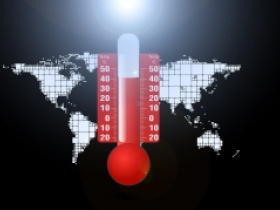Hot in Here

Jul 15, 2019
IT’S GETTING HOT IN HERE
It isn’t only temperatures around the world that are rising; bond prices are rising as well. Why is this happening and how should you invest in this environment?
Bonds prices have an inverse relationship to interest rates; when interest rates rise, bond prices fall, and vice-versa. To help you visualize and remember this relationship, think of a seesaw with one end representing market interest rates and the other end representing the price of a fixed rate bond. As one goes up the other must go down and vice versa.
The answer to why this inverse relationship exists lies in the concept of opportunity cost. Investors are constantly comparing the returns on their current investments to what they could get elsewhere in the market. Most bonds pay a fixed interest rate (“coupon rate”). As market interest rates change, a bond's interest rate will become more or less attractive to investors, who are therefore willing to pay more or less for the bond itself, pushing its price up or down, respectively.
Newly issued bonds tend to have coupon rates that match or exceed the current market interest rate. So, if interest rates rise new bonds will be issued with higher coupon rates, people will no longer prefer the lower fixed interest rate paid by existing bonds and so their prices will fall. But if interest rates decline, bonds that carry higher interest rates than what is now available in the market become more attractive, so people will bid up the price of those bonds.
For this reason, when the Federal Reserve (“the Fed”) increased interest rates in March 2017 by a quarter percentage point, the bond market fell. The Fed raised interest rates four times in 2018 and so it is no surprise that this, coupled with Brexit, slowing economic growth, political tensions and other negative world news, resulted in a softening of bond prices as the year came to a close.
In 2019 the Fed did a complete 180 degree turn and the market is now expecting the Fed to reduce rates. Bond prices have risen in response to the expectation of declining interest rates. In the current environment of low inflation, slow global growth and accommodative central banks, interest rates may very well stay low for some time to come; so how should you invest?
Go long
Investors often embrace short-dated bonds because of their low risks. But if interest rates decline, investors run the risk of having to reinvest the proceeds of maturing bonds in less profitable, lower-yielding instruments. So, if you are buying a bond during a period of declining rates consider “going long”; opting for longer-dated, fixed rate bonds. That way you lock-in the current rate for a longer period.
Take gains with caution
Investors who already own bonds are probably excited to see that the prices on their bonds have increased and are tempted to sell their bonds to take the capital gains. But they too face the risk of having to reinvest the proceeds in a replacement bond that is less profitable and lower-yielding. As such, when bond prices have increased due to declining interest rates, proceed with caution if you decide to sell your bond to take capital gains. Do the math to make sure you are really coming out ahead!
Toni-Ann Neita-Elliott is the VP, Sales & Marketing at Sterling Asset Management. Sterling provides financial advice and instruments in U.S. dollars and other hard currencies to the corporate, individual and institutional investor. Visit our website at www.sterling.com.jm
Feedback: If you wish to have Sterling address your investment questions in upcoming articles, e-mail us at: info@sterlingasset.net.jm
